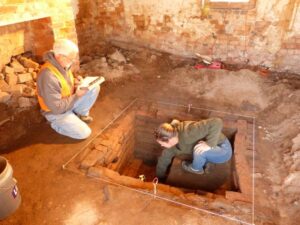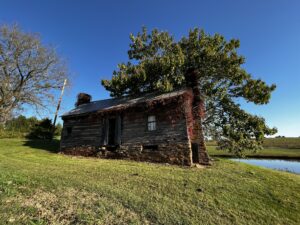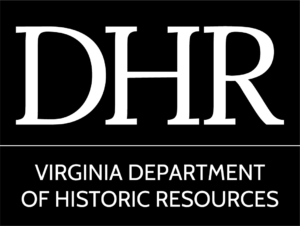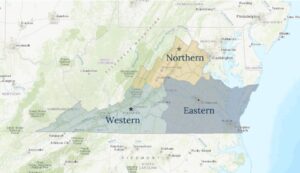- Description
- Updates
- FAQ
- Backers
 Since 1985, the Virginia Department of Historic Resources (DHR) has administered a program for threatened archaeological sites in Virginia. Sites considered for funding must be at least of statewide significance and under threat of destruction. Potential sites are evaluated by a Threatened Sites Committee composed of DHR staff and members of the archaeological community of Virginia. Funds are committed for assessment, excavation, laboratory processing and analysis, and reporting on the identified threatened site. If a site cannot be saved, the funds are used to gather as much information as possible before it is lost forever. Presently, a budget of $50,000 is provided by the Virginia General Assembly and the Governor to DHR to distribute.
Since 1985, the Virginia Department of Historic Resources (DHR) has administered a program for threatened archaeological sites in Virginia. Sites considered for funding must be at least of statewide significance and under threat of destruction. Potential sites are evaluated by a Threatened Sites Committee composed of DHR staff and members of the archaeological community of Virginia. Funds are committed for assessment, excavation, laboratory processing and analysis, and reporting on the identified threatened site. If a site cannot be saved, the funds are used to gather as much information as possible before it is lost forever. Presently, a budget of $50,000 is provided by the Virginia General Assembly and the Governor to DHR to distribute.
The Archeological Society of Virginia (ASV) is a 501(c)3 organization established in 1940 to bring together professional archaeologists and avocational archaeological enthusiasts that have a shared interest in the Commonwealth. The purposes of the Society are to promote the study of archeology and anthropology, especially but not limited to, the Pre-Contact and historic periods in Virginia; to work for the proper conservation and exploration of archeological sites and materials; to encourage the scientific study of archeological sites and materials and to discourage careless, misdirected or commercial collecting of artifacts; to promote the spread of archeological knowledge through the media of publications, meetings, le ctures, exhibits, etc.; and to collaborate with individuals, organizations and agencies that serve the same purposes as those of this Society.
ctures, exhibits, etc.; and to collaborate with individuals, organizations and agencies that serve the same purposes as those of this Society.
The goal of this project is to raise funds to provide an additional source of funding for DHR’s Threatened Sites program through the ASV. The funds will be directed by the ASV to projects recommended by the Threatened Sites Committee.
Methodology
The DHR Threatened Sites Program has stringent requirements that the site and research methodology must meet to be considered for funding. A project proposal must be submitted to DHR for screening before grants will be awarded. The proposal must include information on:
- Property Owner
- Period/Area of Significance
- Type of Project (archaeological assessment, archaeological excavation, specialized analysis, human remains reinterment, or final report preparation)
- Estimated Cost
Applicants also need to provide information on the proposed scope of work, including the level of documentation considered, level of potential significance, degree of integrity, representation/underrepresentation in region, degree and immediacy of threat, and future potential of avoiding threat. DHR also takes into consideration if the proposed project is a continuation/outgrowth of an earlier project funded through the Threatened Sites program and if the proposed site is currently listed in the State/National Registers or if a decision of potential eligibility has been made by DHR. If the proposed project requires issuance of any state or federal permit or requires that DHR follow regulatory permit requirements, information on which permits and processes will need to be provided as well.
A final report documenting the work conducted is required to be submitted to DHR once the work has been completed.
Curation plan
Principal investigators are responsible for creating a curation plan for artifacts recovered and coordinating with DHR for long term storage.
Virginia component description
Excavations will take place in Virginia.
Public product
Determined for each project through consultation with DHR.
Updates
Project FAQ
What is a Threatened Site?
A threatened site is an archaeological site that is in danger of being damaged or lost to time. Some examples of threats include erosion of river banks that expose Native American settlements, storms blowing down slave cabins, looters digging up battlefields searching for Civil War buttons, or even simply time passing and nature reclaiming land that was once the frontier of American settlement.
Not all archaeological sites are endangered, but the ones that are need all the help they can get to preserve vital information about our shared pasts for future generations.
How does the Threatened Sites Grant program work?
Once a threatened site is identified, a grant proposal is submitted to Virginia Department of Historic Resources. This proposal must be completed by an archaeologist that is qualified to lead projects in the state of Virginia, and must have the support of the local community. Grants are due in early May and are evaluated by a committee of archaeologists from across the state. They are awarded in late summer, and archaeologists are required to complete all fieldwork/labwork and complete the report by the following May. After the reports have been approved by community members and reviewed by VDHR staff, they are made available for the public to read.
What does my contribution do?
The grants provided by VDHR are a wonderful opportunity and have been responsible for saving so many stories and memorializing so many people of the past. But there are more threatened sites than there are funds available. Your contribution through this fundraiser will be held in a pot by the Archaeological Society of Virginia, and distributed yearly as additional funds to Threatened Sites Grant recipients. This will allow more funding to go to sites, and for more sites to receive funding to help preserve vital information about our past.
What can I do to help threatened sites in my community?
Anyone can report a site that they think is endangered to their local VDHR representative. See the link or the map below to help find your regional office.
-
Anonymous01/10/2024$5.00



